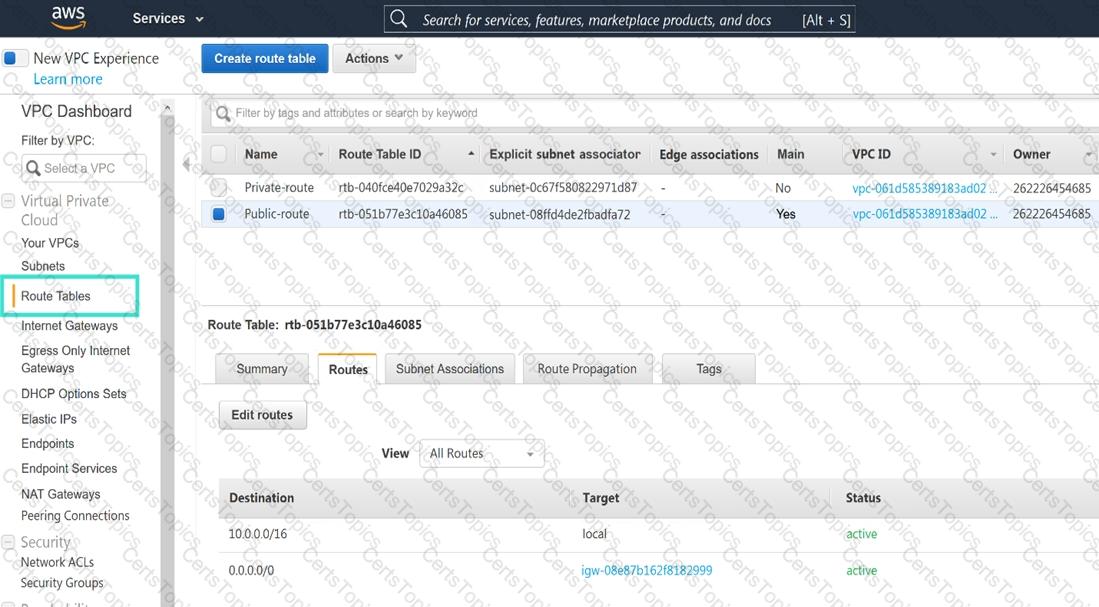Fortinet Related Exams
NSE7_PBC-6.4 Exam



Refer to the exhibit.

You are configuring an active-passive FortiGate clustering protocol (FGCP) HA configuration in a single availability zone in Amazon Web Services (AWS), using a cloud formation template.
After deploying the template, you notice that the AWS console has IP information listed in the FortiGate VM firewalls in the HA configuration. However, within the configuration of FortiOS, you notice that port1 is using an IP of 10.0.0.13, and port2 is using an IP of 10.0.1.13.
What should you do to correct this issue?
Refer to the exhibit.

In your Amazon Web Services (AWS) virtual private cloud (VPC), you must allow outbound access to the internet and upgrade software on an EC2 instance, without using a NAT instance. This specific EC2 instance is running in a private subnet: 10.0.1.0/24.
Also, you must ensure that the EC2 instance source IP address is not exposed to the public internet. There are two subnets in this VPC in the same availability zone, named public (10.0.0.0/24) and private (10.0.1.0/24).
How do you achieve this outcome with minimum configuration?
An organization deployed a FortiGate-VM in the Google Cloud Platform and initially configured it with two vNICs. Now, the same organization wants to add additional vNICs to this existing FortiGate-VM to support different workloads in their environment.
How can they do this?